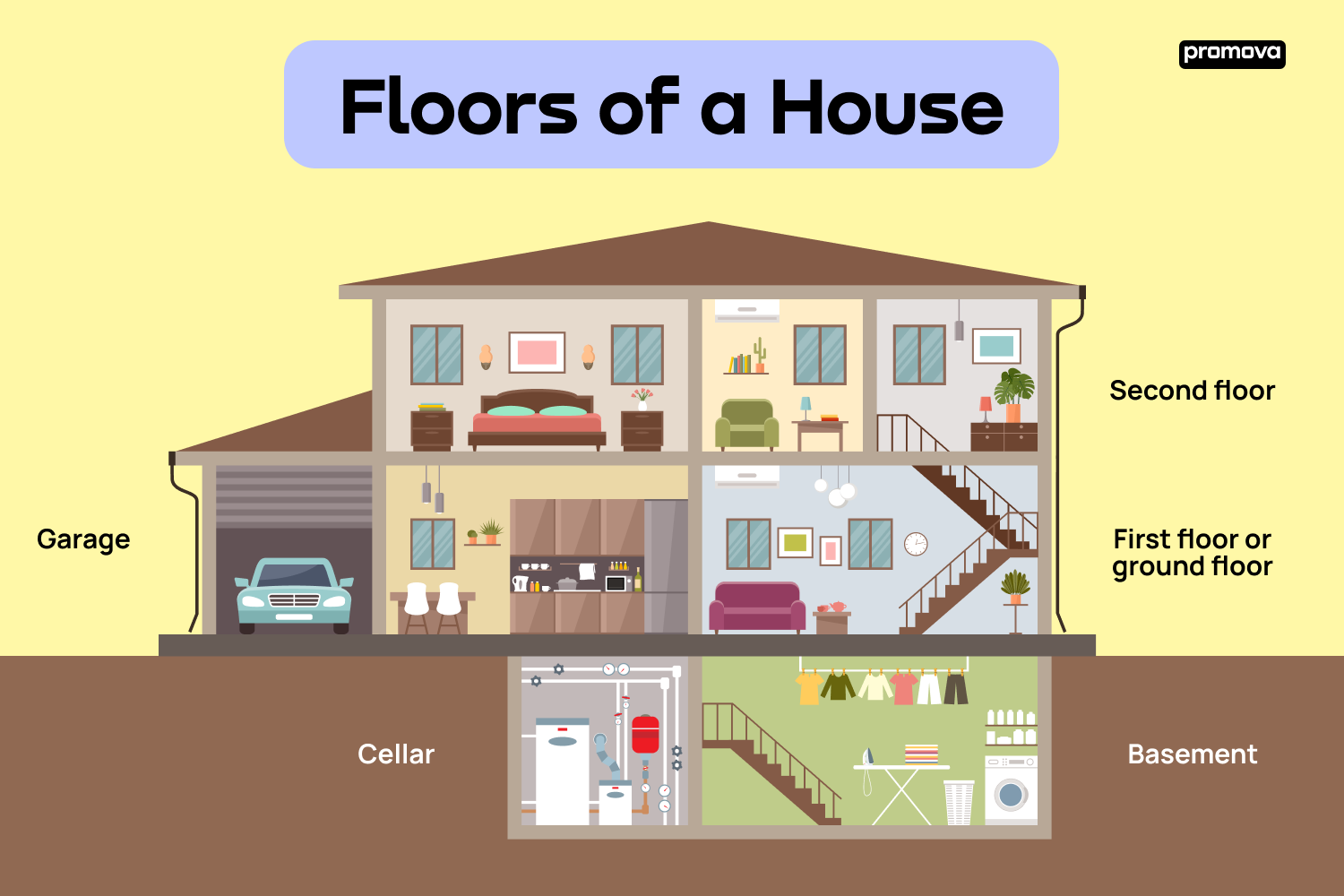Floors of a House Vocabulary
Contents
When building or renovating a home, it's crucial to be familiar with the various terminology, especially when discussing the different floors and areas. If you're a language learner looking to expand your vocabulary regarding this topic, you've come to the right place. In this article, we'll explore the vocabulary specific to the floors of a house.

Primary Floor Terms
Different levels within a home have unique names that denote their position or function. For language learners, understanding these terms can be pivotal, especially when describing or understanding housing structures in English-speaking environments. Let's delve into the common names attributed to various floors.
- First floor or ground floor (UK variant): the floor of a house that is level with the ground.
- Second floor: the floor of a house that is directly above the ground or first floor.
- Basement: the floor below the ground level of a house, often partially or fully underground.
- Cellar: a room below ground level in a house, typically one used for storing wine or coal. It's sometimes considered a deeper or more specialized type of basement.
- Attic: the space or room at the top of a house, just below the roof.
- Mezzanine: an intermediate floor in a building, typically between the ground and first floor.
- Penthouse: the top floor or apartment of a building, typically luxuriously fitted and offering fine views.
Grasping the terms for the various floors of a house is vital to understand descriptions of homes or buildings in English. With these terms in your vocabulary arsenal, you'll find it easier to navigate and discuss housing scenarios.
Additional Spaces
Houses often have supplementary areas dedicated to specific purposes. For those mastering the English language, knowing these space names enriches your vocabulary and aids in more detailed conversations about homes. Dive in to explore these additional nooks and crannies often found in houses.
- Staircase: a set of steps leading from one floor to another.
- Elevator: a platform or compartment housed in a shaft for raising and lowering people or goods to different floors.
- Hallway: a corridor inside a building that connects various rooms.
- Garage: a building or space for parking cars.
- Patio: a paved area outside a house; usually used for dining or recreation.
Homes are more than just basic floors and rooms; they're a combination of many specialized spaces that cater to different needs. With the vocabulary you've acquired about these additional spaces, you can now describe homes in richer detail. As always, practicing these terms in real-life conversations will cement them in your memory.
Conclusion
Knowing the vocabulary for different parts of a house can enhance your communication skills, whether you're discussing home renovations or just trying to describe your living space. Hopefully, with this guide, you're now better equipped to talk about the various floors and rooms in a house with confidence.



Comments